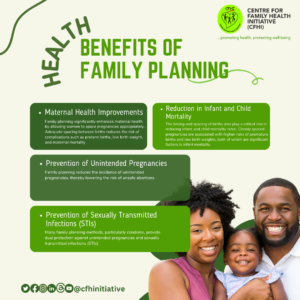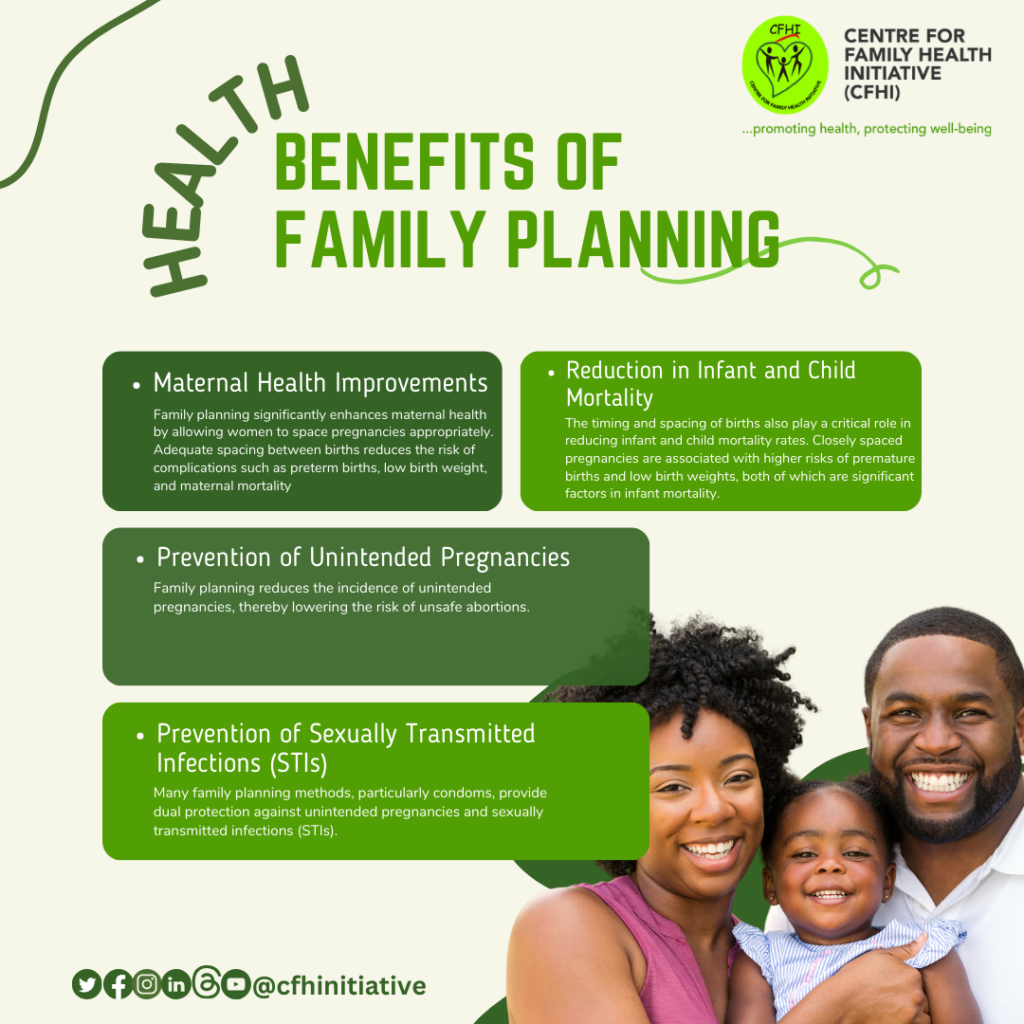Family planning is an essential component of public health, empowering individuals and couples to determine the number and spacing of their children. Its impact extends beyond individual well-being, fostering healthier families, communities, and societies at large. Access to comprehensive family planning services is therefore crucial for achieving global health and development goals.
- Maternal Health Improvements
Family planning significantly enhances maternal health by allowing women to space pregnancies appropriately. Adequate spacing between births reduces the risk of complications such as preterm births, low birth weight, and maternal mortality.1 Pregnancies that are too close together can strain a woman’s body, leading to health issues such as anemia and uterine rupture. By using family planning methods, women can recover fully before conceiving again, ensuring a healthier pregnancy and delivery.
- Reduction in Infant and Child Mortality
The timing and spacing of births also play a critical role in reducing infant and child mortality rates. Closely spaced pregnancies are associated with higher risks of premature births and low birth weights, both of which are significant factors in infant mortality. Furthermore, adequate birth spacing allows parents to provide better care and attention to each child, leading to improved health and developmental outcomes.
- Prevention of Unintended Pregnancies
Unintended pregnancies can lead to various health risks, including unsafe abortions, which are a significant cause of maternal mortality worldwide. Family planning reduces the incidence of unintended pregnancies, thereby lowering the risk of unsafe abortions. Additionally, it helps women and couples make informed decisions about their reproductive health, contributing to overall well-being.
- Control of Population Growth
Effective family planning contributes to the control of population growth, which has broader health implications. Rapid population growth can strain healthcare systems, reduce access to medical services, and exacerbate poverty and malnutrition. By managing population growth, family planning helps maintain a balance between population size and available resources, ensuring better health services and living conditions.
- Empowerment of Women and Gender Equality
Family planning empowers women by giving them control over their reproductive health. This empowerment leads to better educational and economic opportunities, as women who can plan their families are more likely to pursue higher education and participate in the workforce. Enhanced gender equality has been linked to improved health outcomes for women and their families.
At CFHI, we collaborate with donors, healthcare facilities, and relevant organizations to provide reproductive health services in diverse communities. One of these initiatives is the collaboration with Clinton Health Access Initiative (CHAI) to increase awareness of Family Planning and Post-Partum Family Planning services and create linkages between the community and health facilities in 10 Local Government Areas in Kaduna State. Our efforts resulted in reaching significant milestones. CFHI reached 921 traditional birth attendants, 513 leaders, 285 Islamiyah school teachers, 598 community women organizations and Zumuntar Mata members. Additionally, 217 TBA-led community sensitization sessions were conducted, and 150 Islamiyah school cascading sessions were held in 109 wards of the target LGAs.
During Maternal, Newborn, and Child Health (MNCH) week, CFHI annually provides free HIV screening, deworming drugs, immunizations, Vitamin A supplementation, malnutrition screening and referrals, distribution of routine pregnancy drugs, and other essential services to mothers and children.
The health benefits of family planning are extensive and multifaceted. By promoting maternal and child health, preventing unintended pregnancies and STIs, empowering women, and supporting environmental sustainability, family planning is a crucial public health tool.
Reference
https://www.ncbi.nlm.nih.gov/pmc/articles/PMC6667399/


